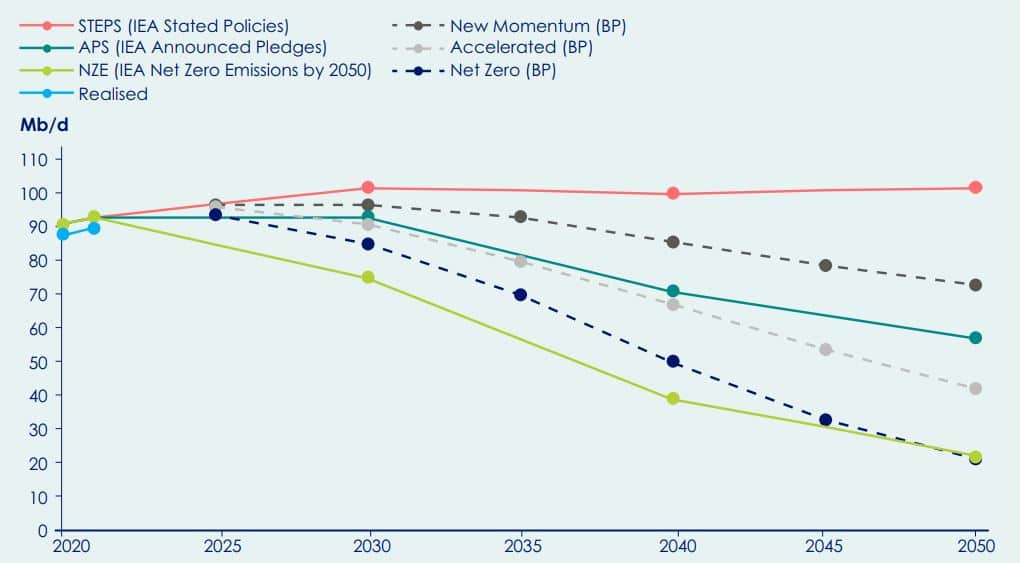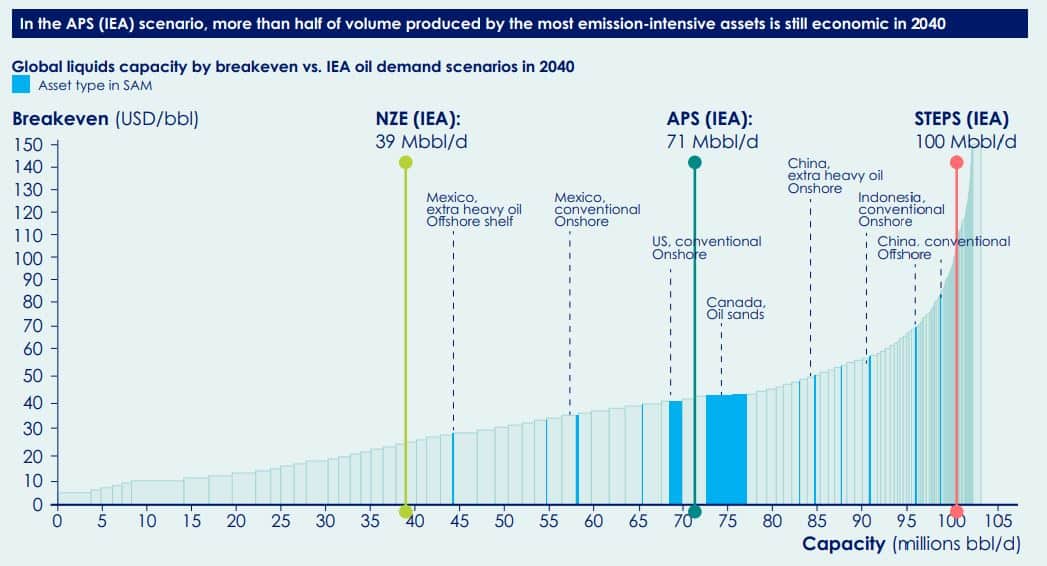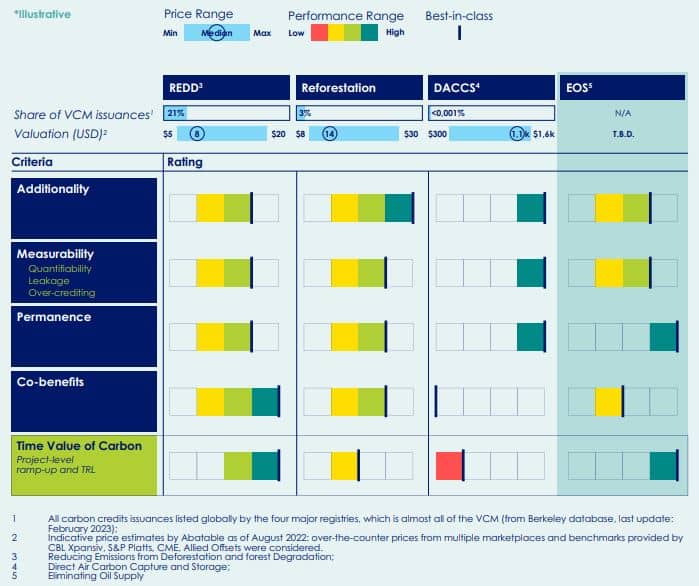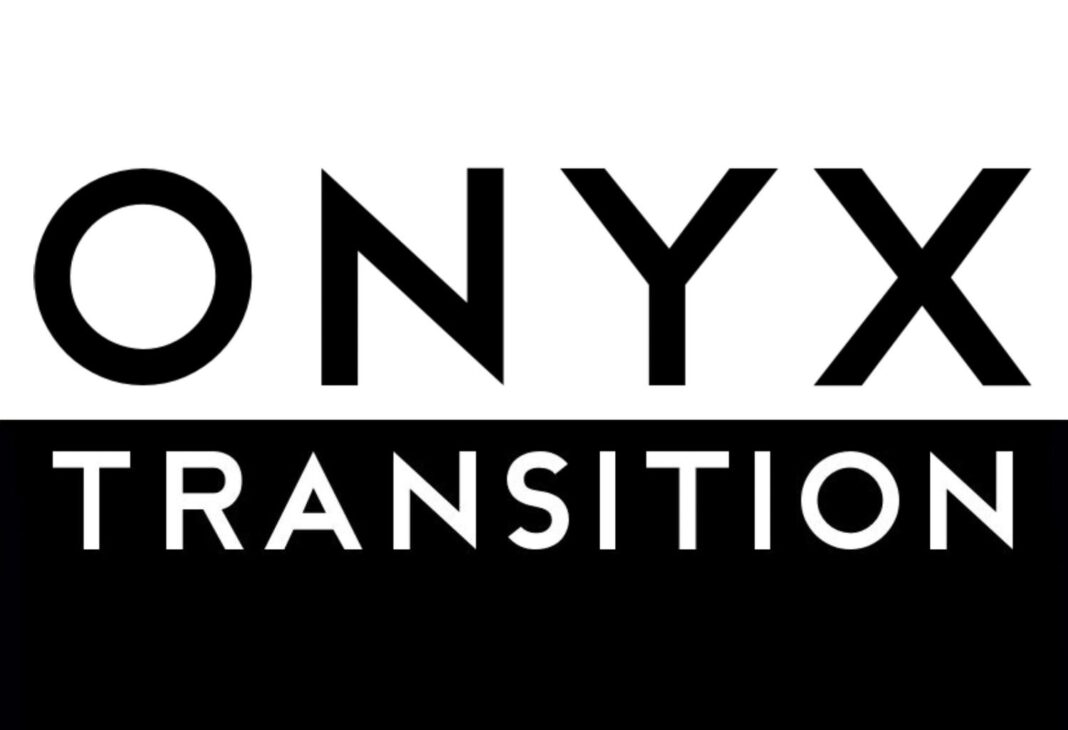In the world of climate action, the primary challenge lies not only in formulating innovative solutions, but also in ensuring they provide robust, scalable, and cost-effective mechanisms for reducing global carbon emissions. Onyx Transition, a voluntary carbon crediting program, aims to do exactly that, offering a novel approach to tackle climate change – eliminating oil supply.
Onyx Transition has introduced a new credit type into the voluntary carbon market, known as the “elimination credit”. This credit has been developed based on the concept of “supply-side crediting”. It is a mechanism Onyx uses to tackle two of the most significant barriers to climate action: negative spillover effects and political opposition.
Meet the New Credit in Carbon Market: EOS Credits
The idea behind supply-side crediting and by extension, elimination credits, is to incentivize oil and gas companies to shut down economically viable fields and keep the fossil fuels in the ground permanently.
Onyx targets only actively-producing, economically-viable oil fields that in the absence of Onyx intervention or new policy, would continue to operate, and generate a profit, for at least another 10 years.
Onyx offers these companies an alternative revenue stream in the form of credits that they can sell on carbon markets. The emissions that would have been generated by the extraction and combustion of these fossil fuels are thus eliminated.
The credits are also known as Eliminate Oil Supply (EOS) credits. The credits’ ultimate goal is to accelerate oil decline to prevent the worst effects of climate change.
Though oil markets are showing a decline, it’s too slow and is trivial under the IEA’s central “Announced Pledges Scenario” (APS). A sharp contraction in oil demand is crucial to reach the 1.5°C scenario. That means a 20% reduction by 2030 and 60% by 2040 as shown in the chart (in grey).
Oil Demand Outlook Across Scenarios

Eliminating the ‘Whack a Mole’ Effect
Onyx’s novel approach stands in stark contrast to most climate policies that make emissions more expensive and mandate emission reductions. Most often, such strategies run the risk of triggering ’emissions leakage’. This refers to the phenomenon where cutting down emissions in one economy leads to those emissions popping up in another less ambitious country.
Such a ‘Whack a Mole’ effect can undermine global climate action efforts.
Onyx’s solution of supply-side crediting can interrupt this emissions leakage, creating a more globally coordinated response to climate change. Simultaneously, this method generates revenue, which can be channeled into investments in low carbon technologies, accelerating the transition to a greener economy.
Another crucial aspect of Onyx’s approach lies in its ability to tackle political opposition, which is one of the most significant barriers to ambitious climate action.
Fossil fuel producers, who stand to lose the most from decarbonization efforts, can become supportive stakeholders under the Onyx model. The prospect of receiving revenue from decommissioning fossil reserves offers a powerful incentive for their participation.
2040 Oil Supply Cost Curve, Demand Volumes Under Oil Scenarios

Without intervention, those assets will continue to produce and grow profitably for the next 10-15 years. And that period is a critical window for climate action.
This is where a market mechanism such as the EOS carbon credits create an immediate, tangible impact at gigaton scale. Phasing out the full high carbon-intensive oil market will reduce 0.2 – 1.1 gigatons of CO2e annually. The actual reduction depends on leakage rates.
Onyx’s emergence comes at a time when the voluntary carbon market is undergoing scrutiny for the quality and reliability of carbon offsets. Amidst this turmoil, the introduction of the elimination credit represents a beacon of innovation and hope.
Racing Against Time
EOS credits offer a unique proposition to carbon markets and warrant robust pricing. In comparison to the existing high-quality credits available in the market, the exhibit shows how the elimination credit stands out.

Time value of carbon refers to actions that impact emissions today and can reduce the risk of climate tipping points. These actions have more value than actions done later.
Unlike other credits such as DACCS, eliminating oil supply doesn’t require any technological advancement or have any supply chain limitations.
In fact, it can ramp up now and deliver gigaton-scale impact this decade to help avoid triggering catastrophic climate effects. As Spencer Dale pointed out, “we are in a race against time and if the VCM is to address the climate crisis, so it’s important that we acknowledge the criticality of the time value of carbon.”
As for the question of permanence—which has been plaguing carbon credits credibility—Onyx addresses this via a three-pronged approach. They use legal, financial, and economic mechanisms to ensure that once a field is shut down, it stays shut down permanently.
As the market matures and buyers become more discerning, mechanisms that offer permanence, immediate impact, and robust protection against reversion risk, such as the elimination credits, are likely to become increasingly valuable.
Onyx Transition represents a paradigm shift in the carbon credits market. By focusing on supply-side crediting and offering an attractive alternative to fossil fuel producers, Onyx provides a compelling solution that aligns economic incentives with ambitious climate action.

